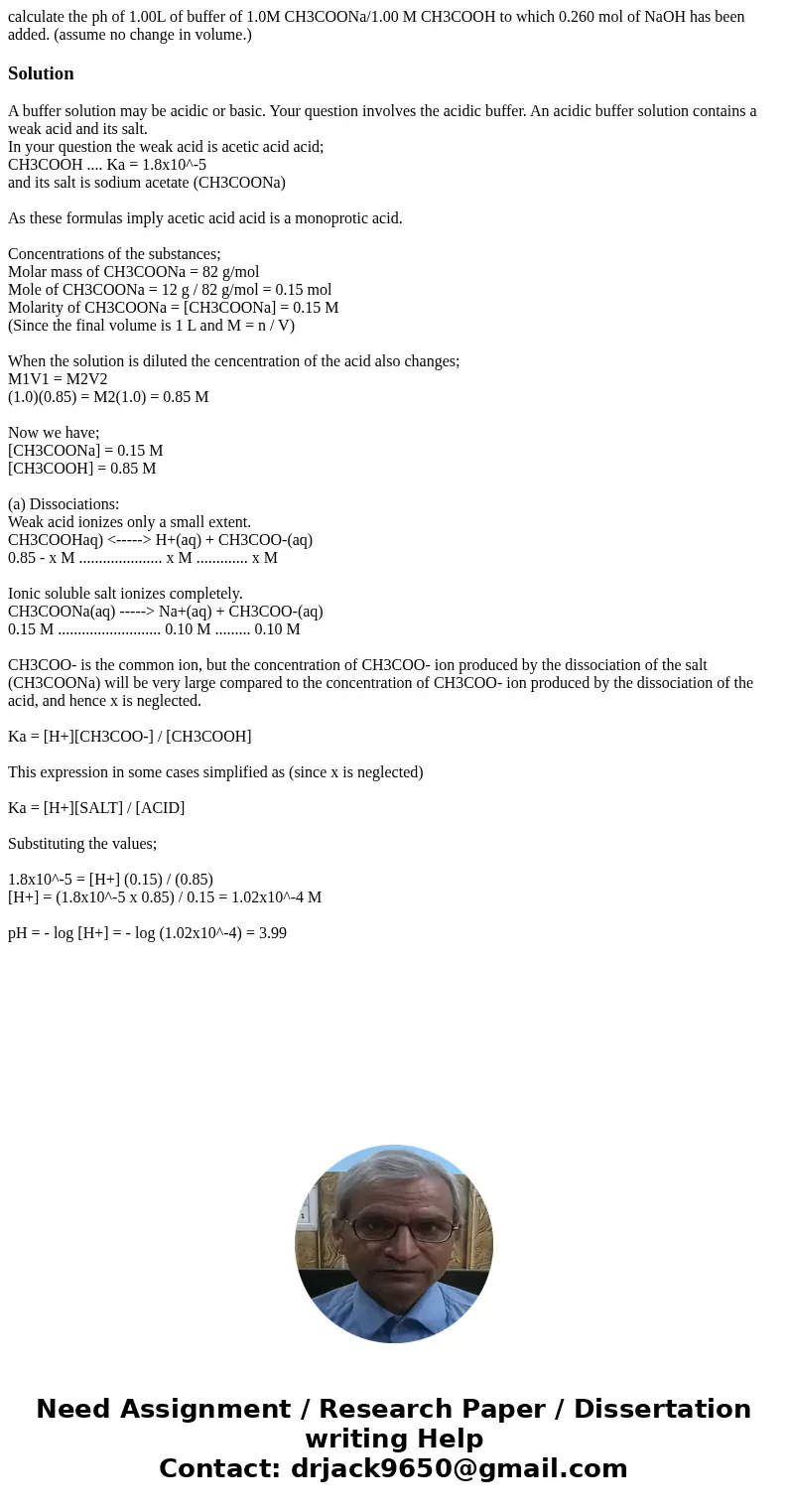calculate the ph of 100L of buffer of 10M CH3COONa100 M CH3C
Solution
A buffer solution may be acidic or basic. Your question involves the acidic buffer. An acidic buffer solution contains a weak acid and its salt.
In your question the weak acid is acetic acid acid;
CH3COOH .... Ka = 1.8x10^-5
and its salt is sodium acetate (CH3COONa)
As these formulas imply acetic acid acid is a monoprotic acid.
Concentrations of the substances;
Molar mass of CH3COONa = 82 g/mol
Mole of CH3COONa = 12 g / 82 g/mol = 0.15 mol
Molarity of CH3COONa = [CH3COONa] = 0.15 M
(Since the final volume is 1 L and M = n / V)
When the solution is diluted the cencentration of the acid also changes;
M1V1 = M2V2
(1.0)(0.85) = M2(1.0) = 0.85 M
Now we have;
[CH3COONa] = 0.15 M
[CH3COOH] = 0.85 M
(a) Dissociations:
Weak acid ionizes only a small extent.
CH3COOHaq) <-----> H+(aq) + CH3COO-(aq)
0.85 - x M ..................... x M ............. x M
Ionic soluble salt ionizes completely.
CH3COONa(aq) -----> Na+(aq) + CH3COO-(aq)
0.15 M .......................... 0.10 M ......... 0.10 M
CH3COO- is the common ion, but the concentration of CH3COO- ion produced by the dissociation of the salt (CH3COONa) will be very large compared to the concentration of CH3COO- ion produced by the dissociation of the acid, and hence x is neglected.
Ka = [H+][CH3COO-] / [CH3COOH]
This expression in some cases simplified as (since x is neglected)
Ka = [H+][SALT] / [ACID]
Substituting the values;
1.8x10^-5 = [H+] (0.15) / (0.85)
[H+] = (1.8x10^-5 x 0.85) / 0.15 = 1.02x10^-4 M
pH = - log [H+] = - log (1.02x10^-4) = 3.99

 Homework Sourse
Homework Sourse